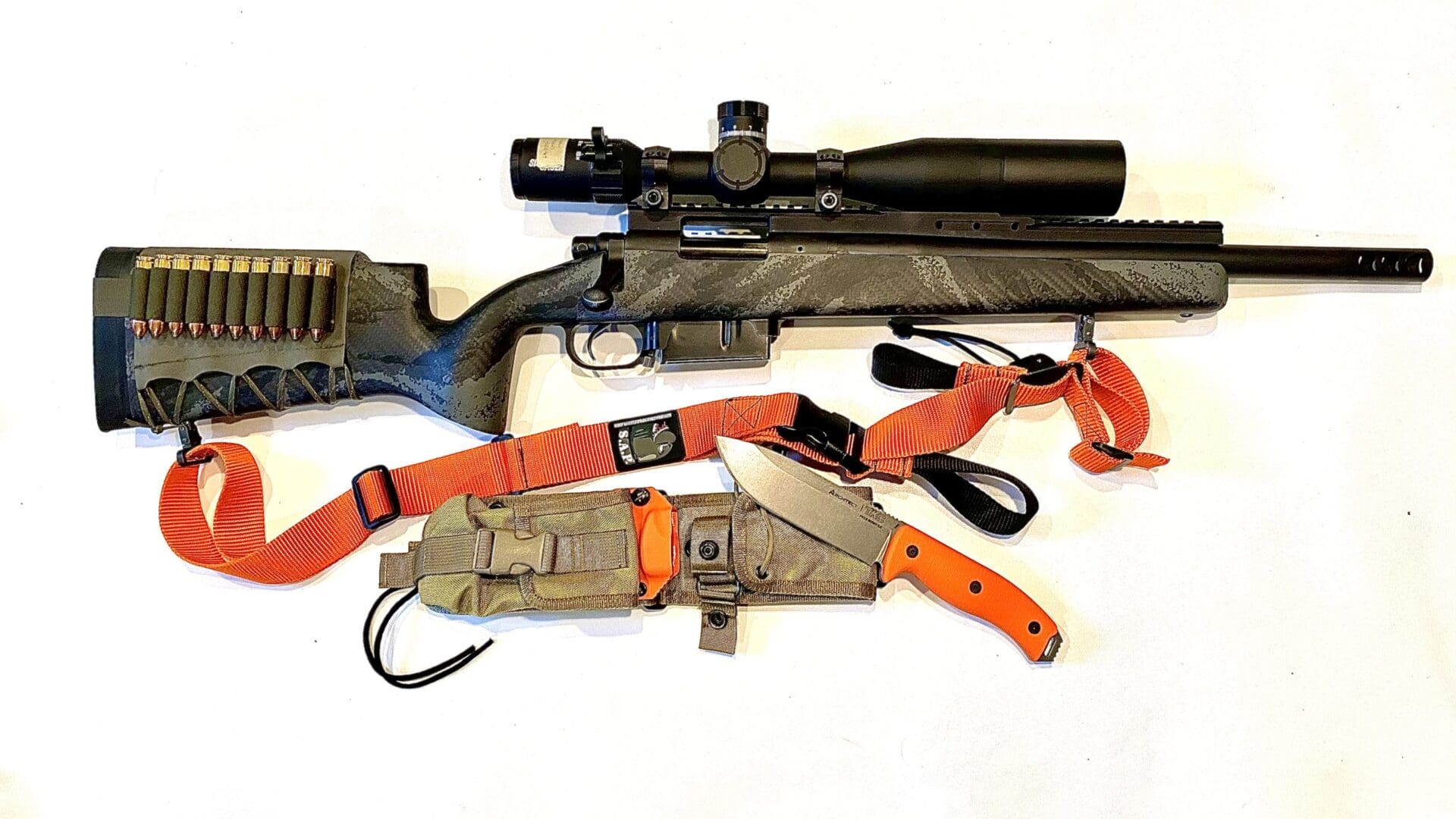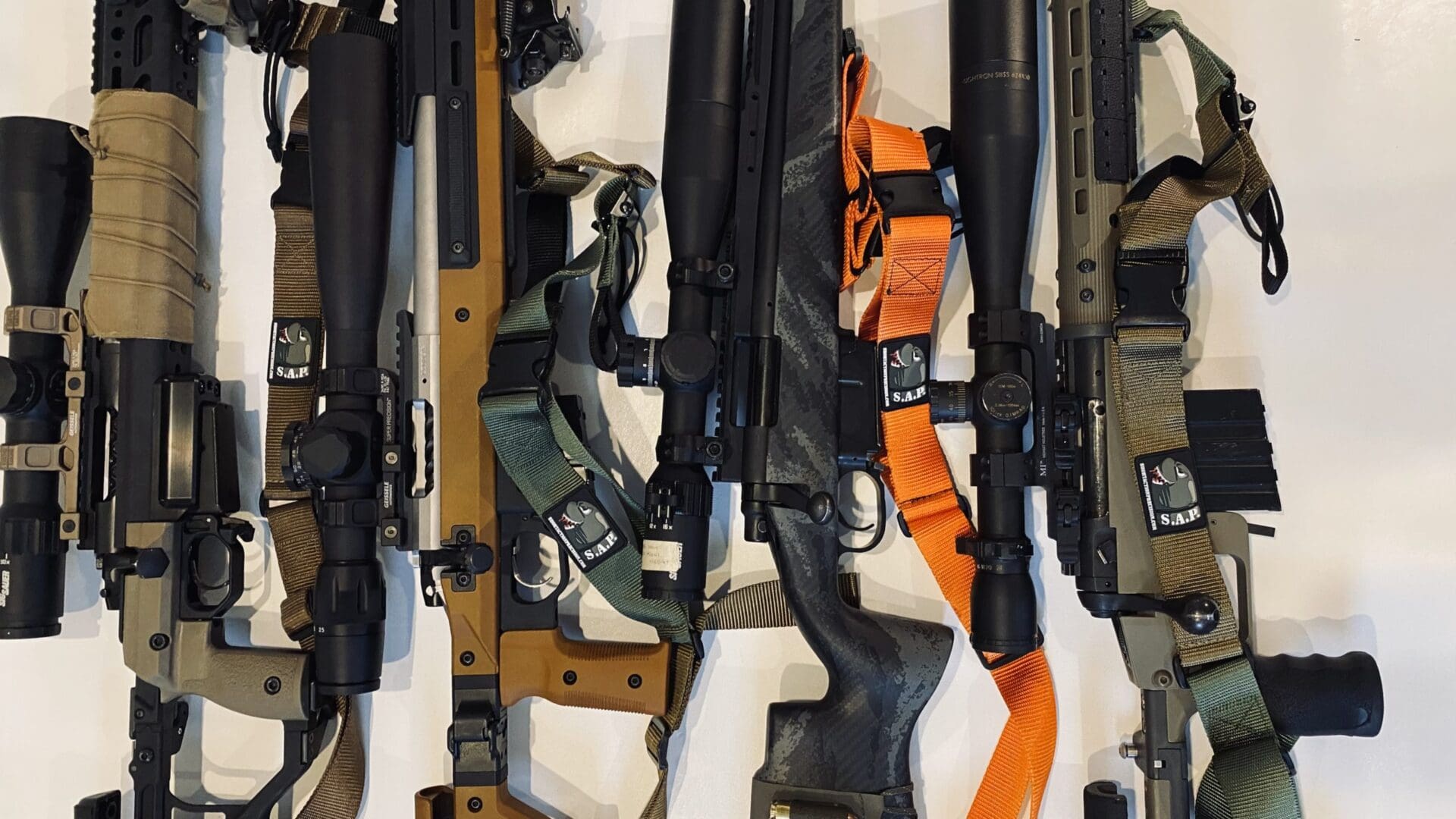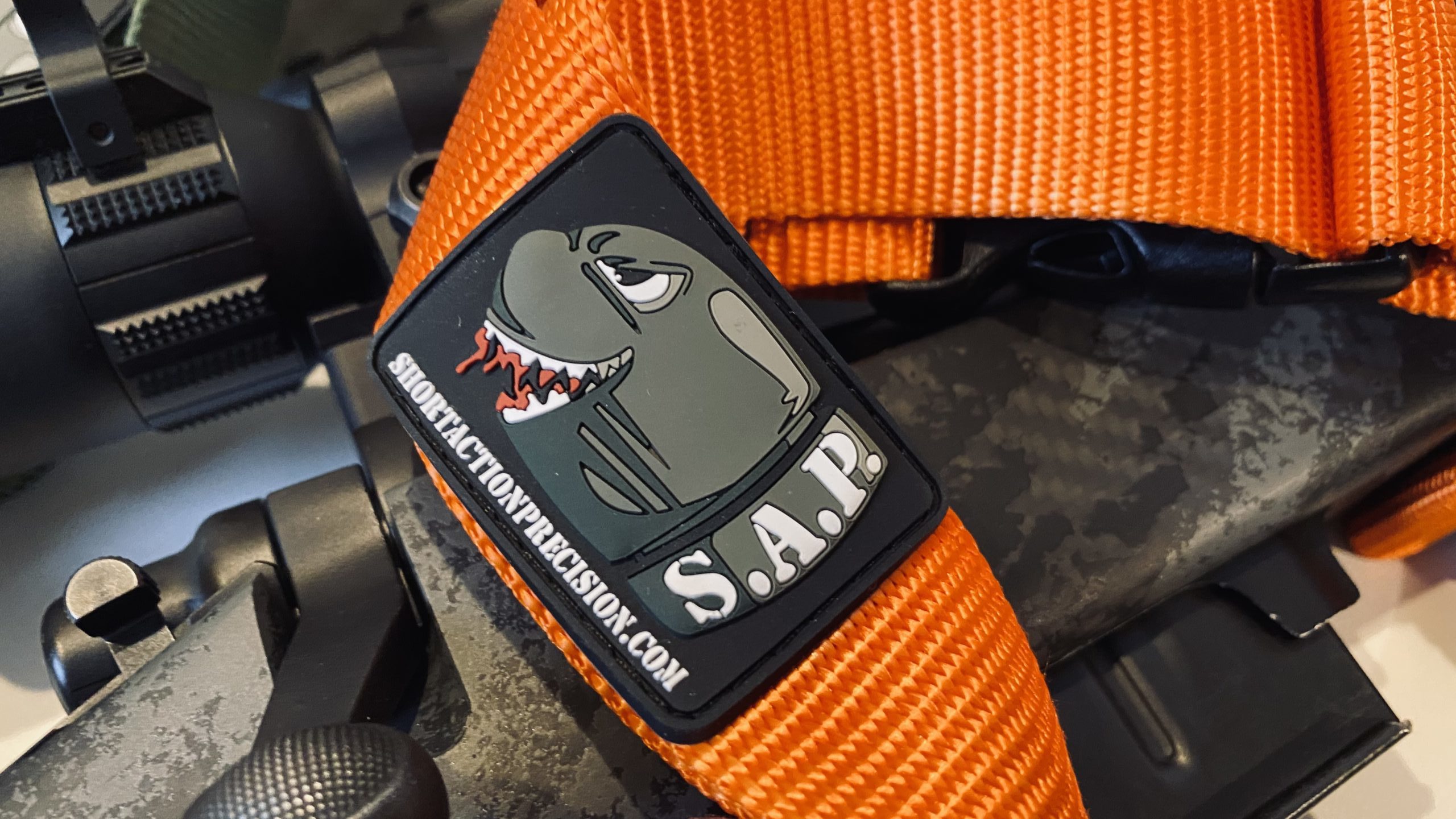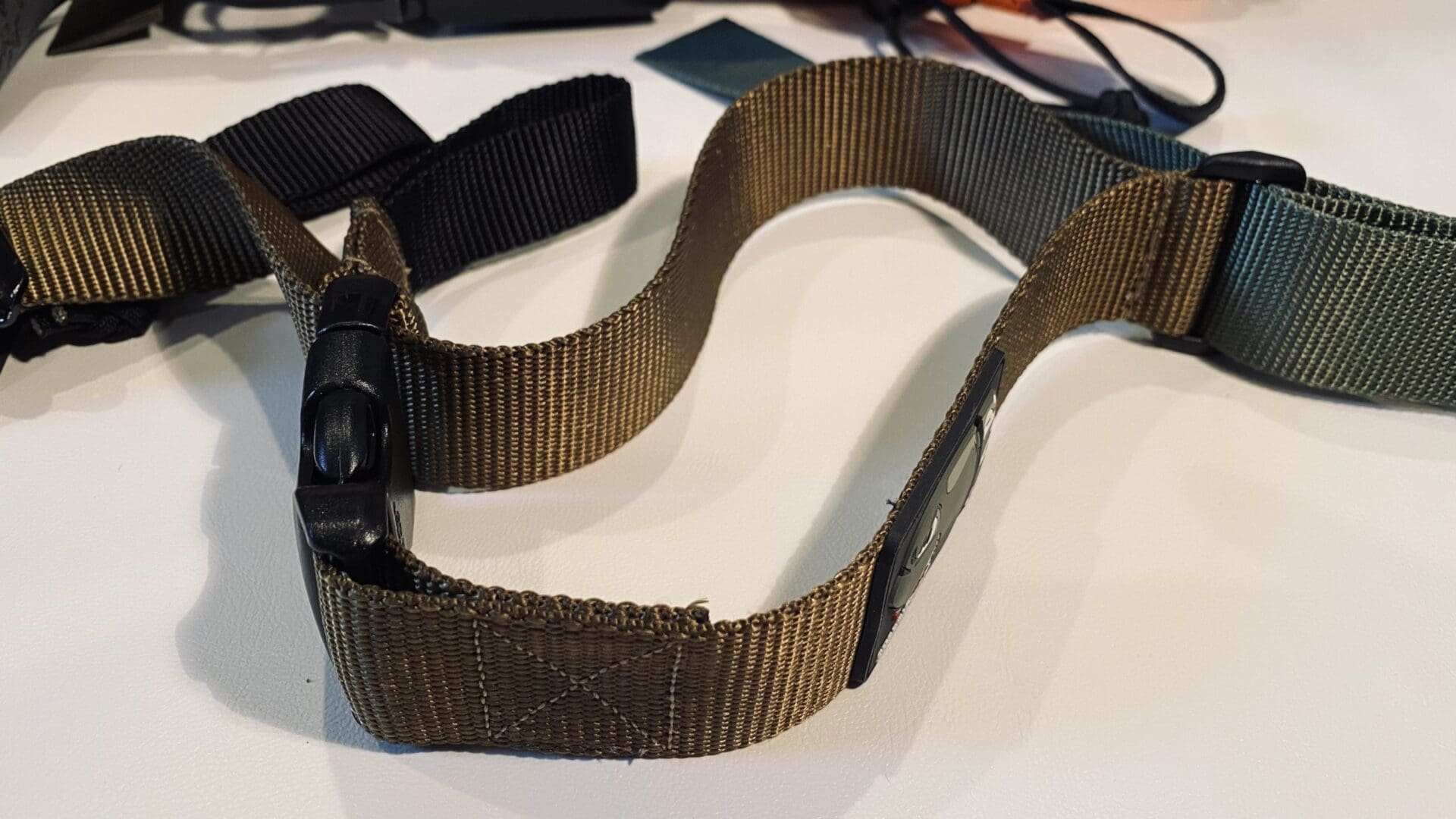
Slings are one of those things that can tell you all you need to know about how seriously a person takes their shooting. In my 17 years of competitive rifle shooting, both at local ranges and at places like Camp Perry, I have come to understand that the mindset around your sling is a snapshot of your priorities as a shooter.
Enter the sling that has replaced all of the slings on all of my rifles: the Short Action Precision Positional Sling.
People generally fall into two camps when it comes to rifle slings. Some view them simply as carry straps and others see them as a vital part of the rifle, like a good scope or bipod. The former are usually hunters and sportsmen who just don’t have use for it as a tool, with the the common thread being that they generally don’t need that much stability to hit a deer at 50 to 100 yards with an old 30-30. Likewise, many carbine and action shooters don’t understand them and usually omit them completely because they never carry their rifles outside the range.
The latter camp is the group that sees slings as serious tools to maximize support for the ultimate in shot stability. I learned to shoot with slings for vintage military and service rifle at a young age and found that I was able to get accuracy as good or occasionally better than I could off the bench.
How is it possible to get better accuracy than on the bench? Well, that’s a relatively simple answer in that bench accuracy is considered a standard in our industry because it is probably the most repeatable from writer to writer and it is easier physically on the shooter with less prep.
The main problem with that is unless you’re a stationary bench rest competitor, almost no real-world shooting occurs from a static bench. In short, while it’s the most easily translated, it’s pretty much a useless activity for anything more than initial zeroing or load testing.

Bench testing is unrealistic in that it’s a completely unnatural position to assume in real life, despite the fact that I guarantee most people only shoot rifles that way most of the time. There are a lot of ranges out there. The fact is, you’re operating in a very limited area while seated that actively restricts your ability to absorb recoil and mount the rifle in a way that’s conducive to greater accuracy.
Prone is where most people begin to see the difference between bench shooting and field shooting. However, prone is again useless unless you’re at an elevation that is advantageous to you. This can also be compounded by simple things like grass and weeds only a few inches tall. You’ll quickly find that prone is a bad place to be if you’re dealing with moving game animals or forgot to mow.
Sitting is the next step here. This position is the first of these that is actually good for most people in the real world. I shoot the vast majority of my deer and other game from a seated position with my sore ass planted firmly on the ground.
There is a large distinction between sitting at a bench and planting your dupa next to a tree at the corner of a field. Your rifle is still unsupported. You can certainly install a long leg bipod or a shooting stick here, and many people are very successful with these. This position is also the first where the stability of a rifle sling comes into play.

Now we are looking at the next step in shooting positions, what I call Schrodinger’s Support. This is support, but at the same time, it really isn’t. This could be using anything from stumps, trees, a backpack, a bipod locked into a branch, an angled ditch, and so on. Your body and/or your rifle can be supported here, but you still need that extra bit of steadiness. This is where the SAP sling comes in.
You may laugh at the notion that you’d be taking a shot literally off of rusty garbage, but that just tells me that you’re not outside enough to actually test your opinions. Real-world shooting is the type of shooting where a small twig in front of your barrel can ruin a $10,000 elk hunt. You don’t have a shooting bench and life, of course, is not fair.
The best you can do is walk in prepared for those shots and actively expect them. You need to provide your own stability when your bipod, tripod, and an elevated blind aren’t available, otherwise you’re deliberately limiting yourself to only taking shots in very narrow circumstances, which reduces your chances of bagging that buck.

In popular competitions like PRS there are all sorts of barriers you have to shoot from. Very few of the matches I’ve watched or shot in are conducted from a single position. In fact, I don’t think there is even one out there that doesn’t have at least ten different challenges from ten different obstacles.
The Short Acton Precision Positional Slings were pretty much designed for use in competitions like this and they excel at it. I have replaced all my other slings with the SAP versions as a result of just how well they work.
The sling itself is made of rather thick nylon with both plastic and metal adjustment buckles. They come in several mounting options, and I use both the traditional stud attachment (on my hunting rifle) and the QD versions on my match rifles.
Unlike a full-blown service rifle sling, the SAP allows unlimited adjustment of length and features a separate tensioning cuff that’s easy to get on and off your arm. To use the stability feature, you don’t have to remove the sling from the rifle at all. Simply place your support arm through the cuff and slide the cuff around the upper bicep.
Once tight, you can use the main tension strap to draw the support arm closer to the rifle. If you use it service style, you would put your arm in and out so the body of the sling rests along the back of your support hand, which is now cradling the handguard.

Pulling the sling tight allows it to shorten up enough to to where you can roll the stock into your firing shoulder. Once rocked in, you can lean down into it and feel the rifle become tight into the body.
If you are doing this against a barricade, you should feel rock steady like you’re locked in. You would then shuffle your body instead of the gun to line up, just like adjusting your footing in golf. Your natural point of aim is now on target.
To release the sling, simply unbuckle the cuff with one hand and you’re free. You can then snap the cuff back together and slide the strap back into its resting/carry position. Once you learn to do this it becomes extremely fast and it affords you real stability almost anywhere, especially in difficult field conditions.
I became sold on these slings after deer hunting season and I ended up putting a hunter orange version on my deer rifle for the simple reason that it’s now super easy to spot at night. It’s too easy to lay your rifle down in the dark and then not be able to find it, even twenty feet away in a bean field.
Overall the SAP Positional Slings are a hidden gem that are made for hard use. The sling is wide enough that it doesn’t dig into your shoulder when walking long distances and the material doesn’t get hard to use in the wet and cold.
While they’re marketed towards PRS and competition shooters, they’re at home on any rifle because they work in providing real stability for making accurate, precise shots in the field.




Is this an updated Ching sling?
That is what I thought.
I have a Andy’s Leather Ching Sling. Was $60, all leather and metal.
Really nice.
Hasty sling and rice paddy prone. I had some new shooters out and they’d never seen or heard of hasty sling, once I demonstrated the benefits they were all using it.
Some handloaders work to get another hundred fps out of there shootzers when another two inches of barrel length will do that, I just cant see the short short barrels on a rifle. Smoke and blast with no gain . Cut the barrel back on a rifle shooting .223 until your getting the ballistics of a 22win mag, I just dont get it?
Possum there’s a difference in a rifle and a carbine and what they do. Yes I want to squeeze everything I can outta my rifle for the 800yd shot but when working in confinement the short barrels shine and you work to find the sweet spot in velocity, muzzle blast, fireballs and maneuverability. For me it’s 10-11” in the AR.
With the rifle yeah extra length can help but it’s a balance there too as I hunt and by hunt I don’t mean feeders set at 9:30 where you drive an ATV in to the heated blind.
As of today it’s America so own them all because tomorrow it’ll be Amerika and you might not be able to
Err yeah I do get it, saves the gunm companies money, why not have two barrels instead of one.Keep on keeping on.
$90 dollars for a nylon sling, eh?
Not just any nylon sling, *this* nylon sling. I’d love to have some of these. But at 90 bucks a pop, that’s $450 to equip all of my rifles, so it’s not happening. I do need to get functional slings and learn how to use them, though.
Can’t you attach a clip of some sort so you can use one sling on all of your rifles?
QD FTW.
Yeah, could do, I guess. Half of them don’t even have sling studs, so I’d have to drill holes and install aftermarket parts.
Having to install your own studs in actually a blessing in some ways. There are a number of options out there for QD type attachment and you can pick the ones you prefer based on your use for that particular rifle.
But what if you end up having a mix and you want to move a sling from one rifle to another that has different studs?
I can’t speak for the featured sling here but if you go with something like the T.A.B. PRS you can then attach short lengths to each type of disconnect and simply undo clips or cobra buckles to move a sling from one rifle to another without screwing with the QD’s leaving them semi-permanently attached to the swivel stud.
Then you put the guys in the link below on the rifle and just swap the sling(s) around as you like. Such a method may well work with this SAP sling, or you could ad hoc it to get the same effect.
https://www.tabgear.com/collections/sling-parts/products/prs-sling-conversion-kit
That’s probably the way to go. Something unobtrusive/inexpensive that I can attach to each rifle, so as to move a single properly configured sling to whichever one I’m using at the moment.
ALWAYS THANKS ON INFOR
Will this work on a long action?
That’s what she asked too.
Very funny.
I take issue with this claim that a sitting position leaves the rifle unsupported. If you do it right, your elbow and knee are the support, and it can be bone-on-bone solid. That’s my go-to when I need to be as accurate as humanly possible.
Within the limits of my (increasingly crappy) eyesight, I can hit anything I aim at from that position. I’ve got a piece of 9mm brass with a .22 caliber hole through the middle of it to prove it, too.
When I hunt the sitting position is the first one on my mind, that and a tree.I’ve also shot good scores in IHMSA using the sitting position. Bone on bone done right ,to me, is close to bench rest solid. A good practice is get solid, on target, close eyes then open them and if the cross hairs or sights haven’t moved your position is good.
Damn I love target shooting and everything that goes along with it.
Five photographs and not one of them shows the sling in use. Josh, this is an interesting article. With five different photographs illustrating what you describe, it would be an interesting and valuable article.
The manufacturer’s website has instructional videos:
https://www.shortactionprecision.com/collections/slings-and-gear/products/black-sap-positional-rifle-sling
“Schrodinger’s Support” – Is that related to Schrodinger’s cat?
the cat belonged to fraida and it was boneless.
Boneless cat is my favorite.
I’ll probably get some of these since my old favorite Browning Xcelerator (may have spelled that wrong) slings are hard to come by. I love quality quick-adjust slings.
Those are great slings. I also have a couple Browning Buckmark All Season quick-adjust slings, which are very easy in the field. Long for carrying to and up the tree across your back, or for steadying your aim, and in seconds it’s short and out of the way once it’s hanging in the tree or shooting freehand or on a rest.
I use custom leather slings on my levers, and I have bungees on my ARs and paracord on AKs. I have a Claw on a turkey gun for running and gunning, doesn’t move.
Works for me, but I’m just a shooter and hunter, not a professional.
$90! And I thought my vtac sling was expensive.
There’s always the cheapskate option of an M1 style sling for $20 or so. I have them on all my rifles, in cotton because it doesn’t skip where nylon will.
I’m personally a fan of the T.A.B. Gear PRS, which is substantially similar but with metal cobra buckles for disconnects and all metal hardware.
It’s like $120 but I only run it on a couple long range rifles where I wouldn’t trust plastic.
This style of sling works remarkably well. If you use it as designed it’s a moderate upgrade from older slings designed for stability rather than just carrying the rifle.
My favorite sling is still the M1907 sling. I like them so much I swap the slings between the guns I use.
ok,
Why would I put a padded/cobra carry sling on rifles intended for long range or competition shooting? Something like hunting where stability counts at 100-1000 yards. Unless maybe for times when there will be long hikes? Why would I use one for something on the battle field in fluid high tension situations?
Why would I not put a carry sling on something intended for short range self/home protection? Something that is likely to be firing at 20-50 yards or less where close-quarters fighting is probable and high accuracy isn’t much of a thing. Particularly for the average civilian.
I mean…
Considering how easy it is to remove/install them AND how cheap they usually are. It would seem that both have their proper places in life.
Depends on the competition, right? I mean some throw challenges out there that are out of the box.
The 2017 Fink had a challenge right up front called the “separator” that required both team members to shoot pistol and rifle offhand from a standing position at targets of unknown size and range. Multiple shots for each firearm.
You’re required to stand so you make the best out of it that you can. Brought a 22lb .338 Lapua? Hope you’ve been working those shoulders and forearms out.
Slings like this have their place. If that place is something you do then they have value. If it’s not something you do then the sling has no value to you.
It’s interesting but I’ll stick with my sitting bipod for hunting
That’s expensive but i think it’s worth it for hunting
affordable Speed loader at https://amzn.to/3l4yKQC
Comments are closed.